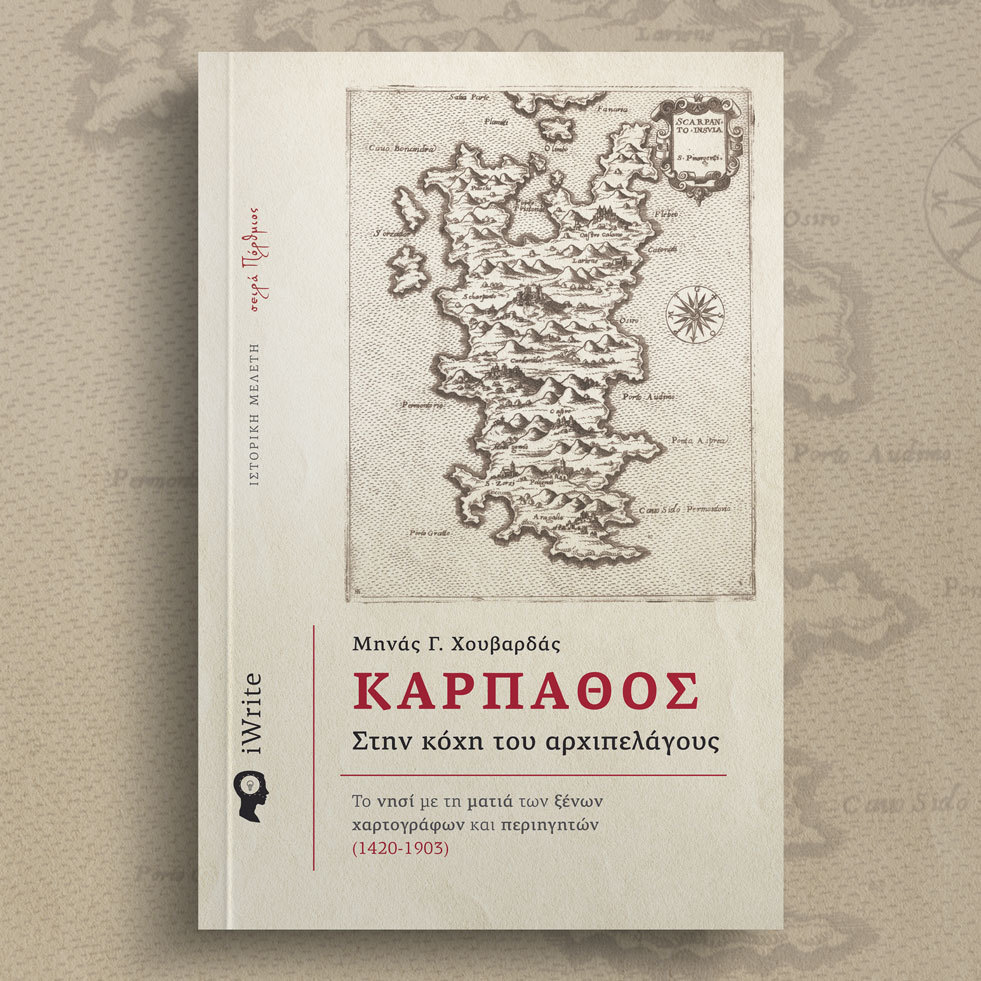Γράφει ο συγγραφέας Μηνάς Χουβαρδάς (βιβλίο «Κάρπαθος – Στην κόχη του Αρχιπελάγους»)
Η ανάγκη για ανακάλυψη & περιήγηση
Ο περιηγητισμός αναπτύχθηκε από την αρχαιότητα και είχε κατά καιρούς διάφορα κίνητρα. Στους νεότερους χρόνους, από τον 15ο αιώνα και μετά, τα κίνητρα μπορούσαν να είναι θρησκευτικά (προσκύνημα στους Αγίους Τόπους), επιστημονικά και εμπορικά. Η πλειοψηφία των περιηγητών είναι προσκυνητές, κληρικοί, κυνηγοί λειψάνων και κειμηλίων, έμποροι, κουρσάροι, διπλωμάτες, αρχαιολόγοι, αρχαιοκάπηλοι και επιστήμονες.
Ένας περιηγητής που το περιηγητικό του ταξίδι συνδέεται με το νησί της Καρπάθου, ήταν ο Mikalojus Kristupas Radvila Našlaitėlis (1549-1616) ή λατινιστί Nicolaus Christophorus Radzivil (Μικολάι Κριστσόφ Našlaitėlis «ο Ορφανός»), από τους πιο ισχυρούς και πλουσιότερους ευγενείς της Λιθουανίας και της Πολωνίας. Έχοντας προβλήματα υγείας έκανε όρκους να επισκεφθεί τους Αγίους Τόπους. Κατά συνέπεια, τον Σεπτέμβριο του 1582 ξεκίνησε για ένα προσκύνημα στην Ιερουσαλήμ, επισκέφθηκε τα περίφημα μέρη της χριστιανικής λατρείας και στη συνέχεια πήρε ένα πλοίο για την Αίγυπτο.
Εκεί παρέμεινε δύο μήνες και επέστρεψε στην Ιταλία, απ’ όπου το 1584 επέστρεψε στην πατρίδα του. Το ταξίδι διήρκεσε δύο χρόνια. Το περιηγητικό του έργο Ierosolymitana Peregrinatio («Προσκύνημα στην Ιερουσαλήμ») δημοσιεύθηκε για πρώτη φορά στα Λατινικά το 1601 και έγινε ένα από τα πιο διάσημα ευρωπαϊκά περιηγητικά κείμενα της εποχής του.
Ενώ βρισκόταν στο Κάιρο, ο Radvila Našlaitėlis αγόρασε δύο μούμιες για επιστημονικούς σκοπούς και, έχοντάς τες συσκευάσει σε κιβώτια, τις φόρτωσε στη «Σαΐτια», το πλοίο του. Ωστόσο, κατά τη διάρκεια του ταξιδιού από την Αλεξάνδρεια προς την Κρήτη, στις 17 Οκτωβρίου του 1583, βρέθηκε εν μέσω μιας ισχυρής καταιγίδας στη θαλάσσια περιοχή του Καρπαθίου πελάγους, στις βραχονησίδες Διβούνια.
Το πλοίο και το πλήρωμά του κινδύνεψε και σε συνδυασμό με το γεγονός πως ο ιερέας του πλοίου άρχισε να διαμαρτύρεται ισχυριζόμενος πως έβλεπε δύο φαντάσματα κάθε βράδυ, ο Radvila Našlaitėlis κατέληξε πως όλα αυτά συνέβαιναν από τις μούμιες, τις οποίες θεώρησε παγανιστικά σώματα και αναγκάστηκε τελικά να τις ρίξει στη θάλασσα:
«…και όταν η νύχτα έγινε πολύ σκοτεινή και τρομακτικοί κεραυνοί και αστραπές έλαμπαν συχνά, είδαν οι ναύτες να ανυψώνεται ψηλά σε δίδυμους βράχους το νησί: από την εικόνα οι ναύτες μας εκτιμούσαν ότι βρεθήκαμε σε δύο έρημα νησιά του Αρχιπελάγους, τα οποία δεν απείχαν μεγάλη απόσταση μεταξύ τους, αυτό και εκείνο Διβούνια ονομάζονται. […] Όταν πια η Σαΐτια παραλίγο να βουλιάξει από τη δύναμη της καταιγίδας και σειόμενη από τη μανία των ανέμων απέκτησε με αυτόν τον τρόπο ρωγμές και οι υπόλοιποι ήταν ανάγκη να αδειάζουν συνέχεια το νερό με την αντλία, ο ναύαρχος, έχοντας χάσει όλο το κουράγιο του, αποκάλυψε σε όλους πως δεν υπάρχει καμιά ελπίδα…».
Η καταιγίδα τελικά υποχώρησε αμέσως και τα «φαντάσματα» εξαφανίστηκαν. Το ίδιο βράδυ και τα δύο επόμενα, παρατήρησε ένα σπάνιο καιρικό φαινόμενο, τη φωτιά του «Αγίου Έλμου», γνωστή στους Έλληνες ως «Αγιονικόληδες», φαινόμενο το οποίο οφείλεται σε αποφόρτιση κορώνας που δημιουργεί φωτεινό πλάσμα από ένα αιχμηρό αντικείμενο κατά τη διάρκεια έντονου ηλεκτρικού πεδίου στην ατμόσφαιρα, όπως κατά τη διάρκεια μιας καταιγίδας.
Ο ίδιος ονομάζει τη «φωτιά» αυτή «αστέρι του Αγίου Γερμανού» (S. Germani sidus). Τα ξημερώματα της 18ης Οκτωβρίου 1583 προσέγγισε την Κάσο και διαπίστωσε πως ήταν ακατοίκητη:
«και όταν ξημέρωσε, εξερευνήσαμε το νησί, στο οποίο είχαμε κατευθυνθεί με τα πανιά, είχε το όνομα Κάσος, ήταν έρημη παντελώς και τραχιά, με ψηλούς βράχους· όταν είχαμε πλησιάσει σε αυτήν, η Σαΐτια βρέθηκε σε πολύ μεγάλο κίνδυνο, επειδή συναντήσαμε υφάλους και βράχους, οι οποίοι ωστόσο ήταν δυνατόν να ιδωθούν τη νύχτα και να αποφευχθούν εξαιτίας του κύματος που τους φανέρωνε με δυσκολία· μόνο οι κορυφογραμμές των προηγούμενων βράχων διακρίνονταν εξαιτίας της λάμψης τους».
Αφού διέπλευσε το θαλάσσιο πέρασμα που βρίσκεται στην Κάρπαθο & τη Ρόδο, τελικά το βράδυ της επόμενης μέρας προσέγγισε με τη βοήθεια των γηγενών ένα ακρωτήρι της Καρπάθου:
«και τότε ο καπετάνιος, που δεν είχε ξεκάθαρη άποψη του τόπου, δεν τολμούσε να πλησιάσει κοντά φοβούμενος ναυάγιο, ωσότου το βράδυ πλησιάσαμε τις φωτιές σε κάποιο ακρωτήριο του νησιού (διότι είναι συνηθισμένο να δίνουν σημάδι στους ναυτικούς ανάβοντας φωτιά, όποτε οι κάτοικοι έβλεπαν περιπλανώμενο πλοίο, για να μπορούν να πλησιάζουν σε αυτόν τον τόπο με ασφάλεια), βλέποντας και ελέγχοντας τις ακτές του νησιού ως τη νύχτα».
Προσέγγισε το πρωινό της 20ής του Οκτώβρη 1583 την παραλία του Λευκού, δυτικά από την Κάρπαθο, για να επισκευαστεί το πλοίο και να καλαφατιστεί, επειδή υπέστη ζημιές από την κακοκαιρία, και για να ανεφοδιαστούν με τα αναγκαία:
«Το πρωινό της 20ής του Οκτώβρη, πλησιάζοντας το νησί, μπήκαμε στο μικρό λιμάνι που παλαιότερα λεγόταν Αγάθη και δέχεται μόνο μικρά πλοία. Με τις άγκυρες ριγμένες, αρχίσαμε να κλείνουμε τις ρωγμές του πλοίου και να το καλύπτουμε με πίσσα, με τους ναύτες να επιβεβαιώνουν πως αν για δύο ακόμα ώρες είχε μείνει στην καταιγίδα, το πλοίο Σαΐτια ένα με μας θα χανόταν. Κατεβαίνοντας στην παραλία αγοράσαμε τα αναγκαία από Έλληνες. Διότι, αν και είχαμε μαύρα πουλερικά στο πλοίο, είχαν πνιγεί από τα κύματα…».
Ο Radvila Našlaitėlis στο σημείο αυτό βρίσκει την ευκαιρία να αναφέρει λίγες πληροφορίες για την Κάρπαθο και τους κατοίκους της:
«αυτό το νησί ανήκει στους Τούρκους και διοικητή του έχει Τούρκο, αλλά έχει Έλληνες κατοίκους, όπως και τα υπόλοιπα νησιά του Αρχιπελάγους, και καλλιεργούν χωράφια και αμπέλια. Επειδή προέβλεψαν τις επιδρομές των Τούρκων, κατέφυγαν στην προστασία των οχυρών, διότι όπου είχαν εμφανιστεί [οι Τούρκοι] υπήρχε ο φόβος των Ελλήνων. Όταν όμως πλησιάζει απειλητικά ο χρόνος, μερικά πλοία με Γενίτσαρους έρχονται στα νησιά εκείνα και αρπάζουν το βιος των κατοίκων. Μερικές πόλεις σε αυτό το νησί είναι φτωχές και ορατές από τη θάλασσα, σε αυτές όμως τα πλοία δεν πλησιάζουν, επειδή στερούνται λιμανιού. Σε αυτόν τον τόπο που αποβιβαστήκαμε δεν βρισκόταν μακριά το χωριουδάκι με το όνομα Λαρές».
Η περιηγητική μαρτυρία του Λιθουανού πρίγκιπα για την Κάρπαθο είναι πολύ σημαντική για δύο κυρίως λόγους: πρώτον, είναι ο μόνος περιηγητής που αποδεδειγμένα φτάνει στο νησί μετά από την πρώτη καταγεγραμμένη μαρτυρία του Cristoforo Buondelmonti στα 1420 και πριν από την έλευση του Γερμανού αρχαιολόγου και περιηγητή L.Ross το 1843.
Δεύτερον, χάρη στη δική του μαρτυρία, έγινε εφικτή η ταύτιση του λιμένος Agata με τη θέση του σημερινού Λευκού, ενώ παράλληλα μαθαίνουμε την ύπαρξη, την εποχή εκείνη, ενός παραλιακού οικισμού με το όνομα Λαρές, ο οποίος σήμερα σώζεται μόνο ως τοπωνύμιο στο νησί.
Ο χρόνος, όμως, και οι λόγοι της εγκατάλειψής του παραμένουν ως σήμερα άγνωστοι. Η αρχαιολογία ίσως μπορέσει να δώσει απαντήσεις σχετικά με τον μικρό αυτόν μεσαιωνικό οικισμό της Καρπάθου.
Βρείτε περισσότερα ενδιαφέροντα στοιχεία για την Κάρπαθο από τις Εκδόσεις iWrite

